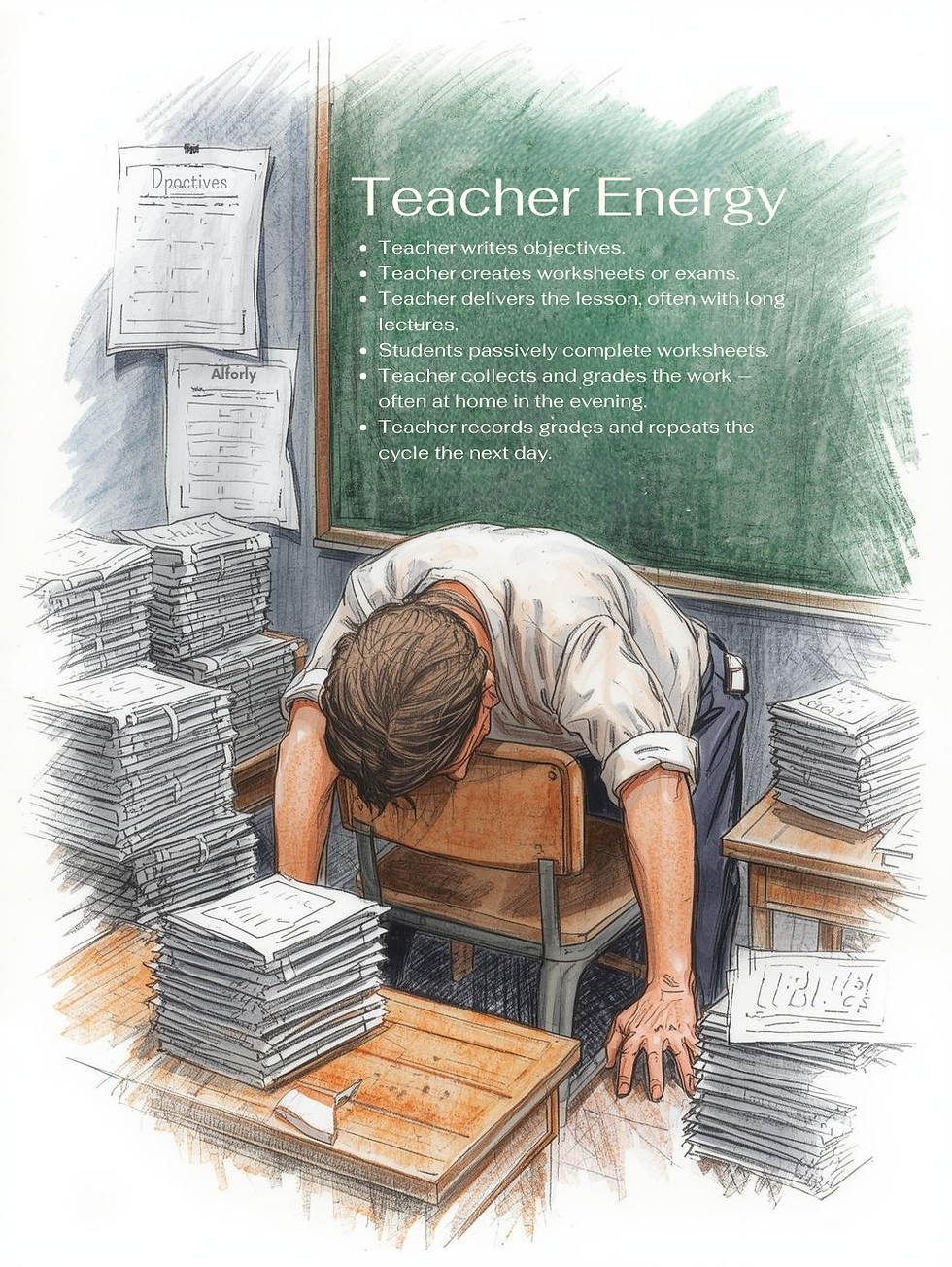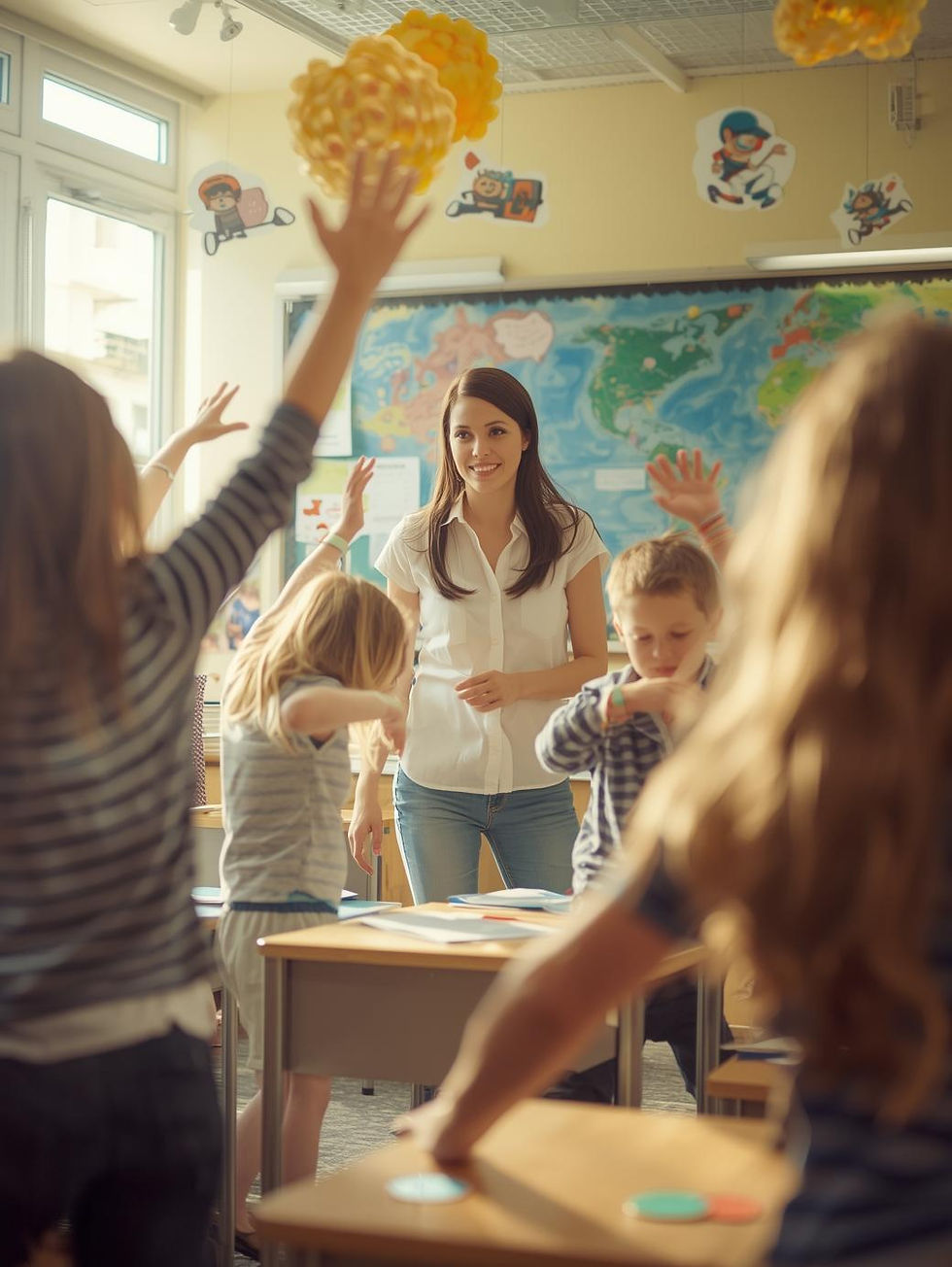🌱 From Exhaustion to Energy: What Finnish Pedagogy Teaches Us About Lesson Planning
- vanessa speigle
- 2 days ago
- 3 min read
Have you ever finished a school day more exhausted than your students? You’re not alone. Around the world, teachers report spending hours preparing lessons, creating worksheets, grading stacks of papers, and recording marks. Yet even with all that work, student engagement isn’t always guaranteed.
There’s another way. In Finland, one of the highest-performing education systems globally, lesson planning is lighter, more flexible, and built around student agency. Teachers guide the learning but students carry the cognitive and creative load. The result? More engaged students and more energized teachers.
This is exactly what the Rekla framework brings to CBC classrooms and global classrooms everywhere: research-backed strategies that protect teacher energy while amplifying student engagement.
1. Why Traditional Planning Drains Teacher Energy

In a traditional classroom, the cycle looks like this:
Teacher writes objectives.
Teacher creates worksheets or exams.
Teacher delivers the lesson, often with long lectures.
Students passively complete worksheets.
Teacher collects and grades the work often at home in the evening.
Teacher records grades and repeats the cycle the next day.
It’s a teacher-heavy model. The teacher works harder than the students, while students are mostly passive. Over time, this constant loop creates stress, exhaustion, and burnout.
2. Rekla Planning: A Finnish-Inspired Alternative
In Finland, teachers don’t carry stacks of worksheets home. Instead, they focus on learning outcomes, what students can actually show by the end of a lesson. Outcomes are observable and skill-based: verbs like compare, explain, retell, design, critique.
Once outcomes are set, the Rekla lesson structure lightens the load:
Warm-Up Spark: curiosity through questions or quick activities.
Circle Time: connecting prior knowledge through discussion.
Main Activity + Stations: hands-on exploration where students practice in multiple ways.
Action Break: movement to restore focus.
Reflection: evidence gathered in real time through teacher observation, peer feedback, and student self-assessment.
By the end of class, the teacher already has learning evidence. No stacks of papers to mark at night.
3. The Hidden Power of Action Breaks

In Finnish schools, lessons last around 45 minutes, followed by a 15-minute outdoor break. Research shows that movement resets attention, boosts mood, and increases focus when students return.
Even in CBC or international classrooms, you can adapt this principle. Action breaks don’t require resources just creativity. Try:
Jumping along a number line.
Clapping or stepping in patterns.
A quick stretch-and-count relay.
These breaks protect student focus and teacher energy by reducing behavior issues that arise from fatigue.
4. Stations: Building Student Agency Through Cross-Subject Learning
Stations are short, 10–12 minute activities where students rotate through different ways of practicing the same outcome. This keeps energy high and taps

into multiple strengths.
Take a math comparison lesson:
Building Station (Math/Logic): Use blocks to build and compare two groups of numbers.
Active Station (PE + Math): Show comparisons through movement — hopping, lining up, or racing to collect items.
Art Station (Math + Art): Draw groups of numbers, using colors and designs to show which is greater.
Literacy Station (Math + Storytelling): Write or tell a story that weaves in comparisons.
Notice how this structure integrates PE, art, and literacy into math. That’s Finnish phenomenon-based learning in action: one skill, multiple pathways, and students choosing how to demonstrate their learning.
5. Reflection: The Assessment Happens in Class

Instead of worksheets, Rekla lessons close with reflection in three layers:
Teacher Assessment: observing during stations and action breaks.
Peer Assessment: students explain thinking and give each other quick feedback.
Self-Assessment: students check off a rubric statement like “I can compare numbers with objects” or write a one-sentence reflection.
John Hattie’s Visible Learning research shows both teacher clarity and student self-assessment rank among the highest-impact strategies for achievement. Reflection is where that research becomes reality in real time, without the grading backlog.
6. Traditional vs Rekla: Who’s Doing the Work?
Traditional: Teacher plans, teaches, makes worksheets, grades. Students sit, listen, fill blanks. Teacher exhausted, students passive.
Rekla: Teacher sets outcomes, facilitates inquiry and stations, provides rubrics. Students explore, build, draw, move, tell stories, and reflect. Teacher energized, students engaged.
The difference is simple but powerful: in Rekla lessons, students work harder than the teacher.
🌱 Protecting Your Energy, Empowering Your Students
When you shift from objectives to outcomes, from worksheets to stations, from teacher grading to student reflection, you lighten your load and strengthen theirs.
That’s the Rekla promise: teacher energy = student energy. Protect your calm, and your students will thrive. You shift from exhaustion to energy.
👉 Want to go deeper? Explore the Rekla Framework Bundle or watch today’s YouTube video for a practical walk-through.





Comments